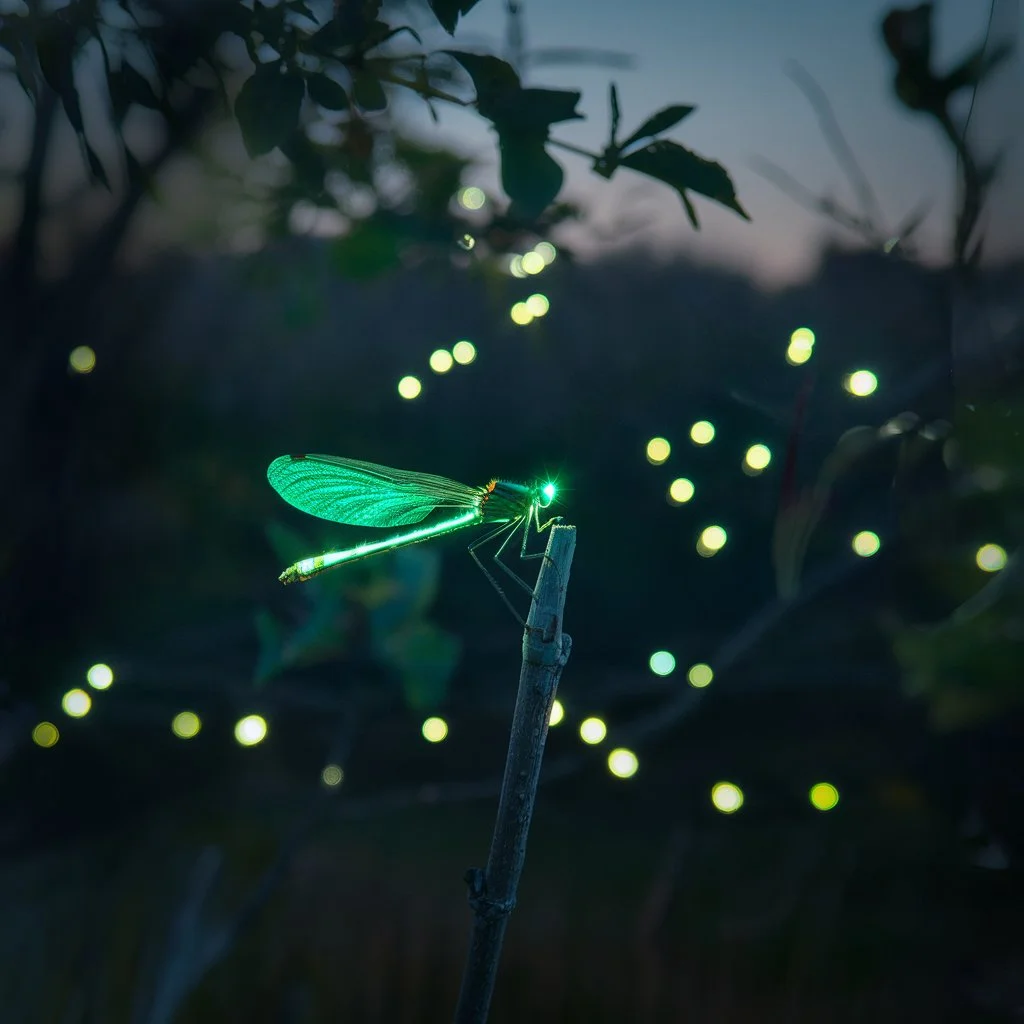Bioluminescence and sound production are two unique insect adaptations utilized largely for communication, mating, and defense. Bioluminescence, which is visible in species such as fireflies, is the production of light by a chemical reaction involving luciferin and luciferase, and is frequently utilized to attract mates or discourage predators. Crickets and cicadas produce sound by mechanisms such as stridulation (rubbing body parts) or vibrating tymbals, which serve a variety of functions including mating calls, territorial defense, and social engagement. Both events are critical to the survival strategies of many insect species.
Table of Contents
Bioluminescence in Insects

Bioluminescence, a captivating phenomena found in many creatures, is especially noticeable in some insect species. This natural light emission results from biological interactions within animals and is principally catalyzed by the enzyme luciferase, which acts on the light-emitting molecule luciferin. Bioluminescence, which differs from fluorescence and phosphorescence, is defined by the reaction’s production of light without considerable heat. Bioluminescence is the production and emission of light by living organisms. It is found in a variety of insect groups, most notably fireflies (family Lampyridae) and certain kinds of glowworms.
Mechanism:
- Chemical reaction: Insects produce light using a biological reaction that includes luciferin (a light-emitting molecule), luciferase (an enzyme), oxygen, and various cofactors. When luciferin oxidises in the presence of luciferase and oxygen, it creates light.
- Efficiency: Bioluminescent light is extremely efficient, generating nearly no heat in the process.
Functions:
- Mating Signals: Fireflies employ light patterns to attract mates. Different species have unique flashing patterns that aid in identification.
- Camouflage: Certain glowworm larvae use their light to blend into their surroundings, preventing predators from detecting them.
- Predator Avoidance: Some insects employ bioluminescence as a warning signal to avoid predators.
- Prey Attraction: Glowworms larvae can use light to attract prey, such as small insects drawn to the glow.
Sound Production in Insects
Sound production is critical to insect behavioral ecology, functioning as a method for communication, mate attraction, and territorial defense. Insects use a variety of mechanisms to make sound, the most notable of which are stridulation, tymbal action, and vocal sacs. Crickets and grasshoppers typically display stridulation, in which they make sound by rubbing specialized body parts, such as their wings or legs, against each other. This strategy is critical for transmitting intended signals during mating seasons or alerting others to potential hazards. Insects also use sound generation, or stridulation, to communicate, notably for mating calls, territorial defense, and warning messages. The most well-known examples include crickets, cicadas, and katydids.
Mechanism:
- Stridulation: Crickets and other insects make sound by rubbing their wings or legs together. This is particularly frequent among orthopteran insects, such as grasshoppers and crickets.
- Tymbals: Cicadas make sounds by rapidly contracting and relaxing particular muscles related to structures known as tymbals on the sides of their belly. This generates a loud clicking or buzzing sound.
- Wingbeats: Some insects, such as mosquitoes and bees, generate sound by rapidly flapping their wings.
Functions:
- Mating Calls: Male insects frequently use sound to attract females. Each species has a distinct frequency or beat that helps females identify their own species.
- Territorial defense: Sound can also be used to deter rival males from a claimed territory.
- Predator deterrent: Some insects make sounds to drive away possible predators.
- Social Communication: Insects such as ants and termites communicate inside their colonies via sound (by vibrations).
Examples
- Fireflies (Lampyridae): The most well-known example of bioluminescent insects, which produce flashing light patterns during mating.
- Cicadas (cicadidae): They are known for their loud, continuous mating sounds, which are made by tymbals.
- Crickets (Gryllidae): They make their unique chirping sounds by rubbing their wings together.
- Glowworms (Arachnocampa species): They live in caverns and use light to entice animals into their sticky silk threads.
Both bioluminescence and sound generation are important communication capabilities for insects, allowing them to survive and reproduce in their natural settings.
What is bioluminescence in insects?
Bioluminescence is the ability of certain insects, such as fireflies and glowworms, to produce light using a chemical reaction involving luciferin, luciferase, oxygen, and ATP. This light is mostly used for communication and mating.
How do insects produce sound?
Insects such as crickets and grasshoppers produce sound by rubbing their body parts together, a process known as stridulation. Cicadas make sound using specialized structures called tymbals, which they vibrate with muscles.
Related Articles

